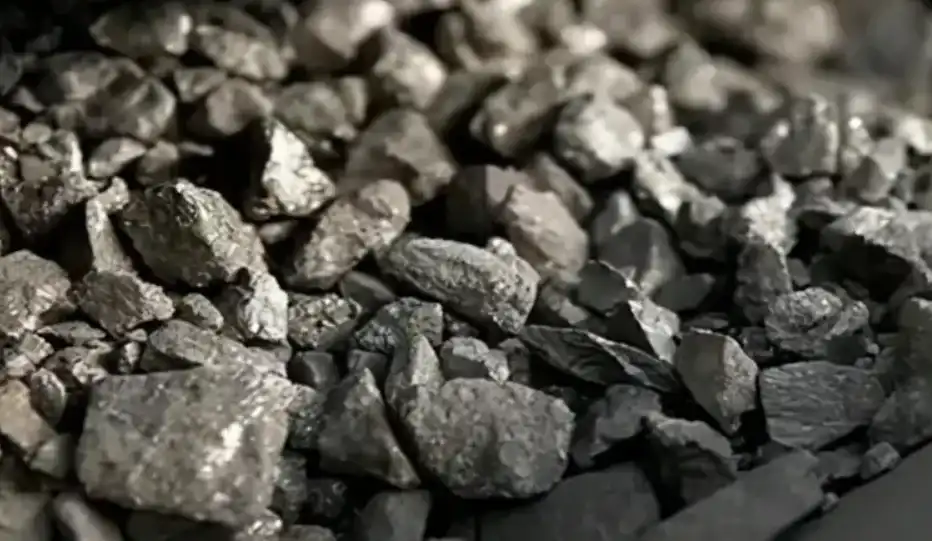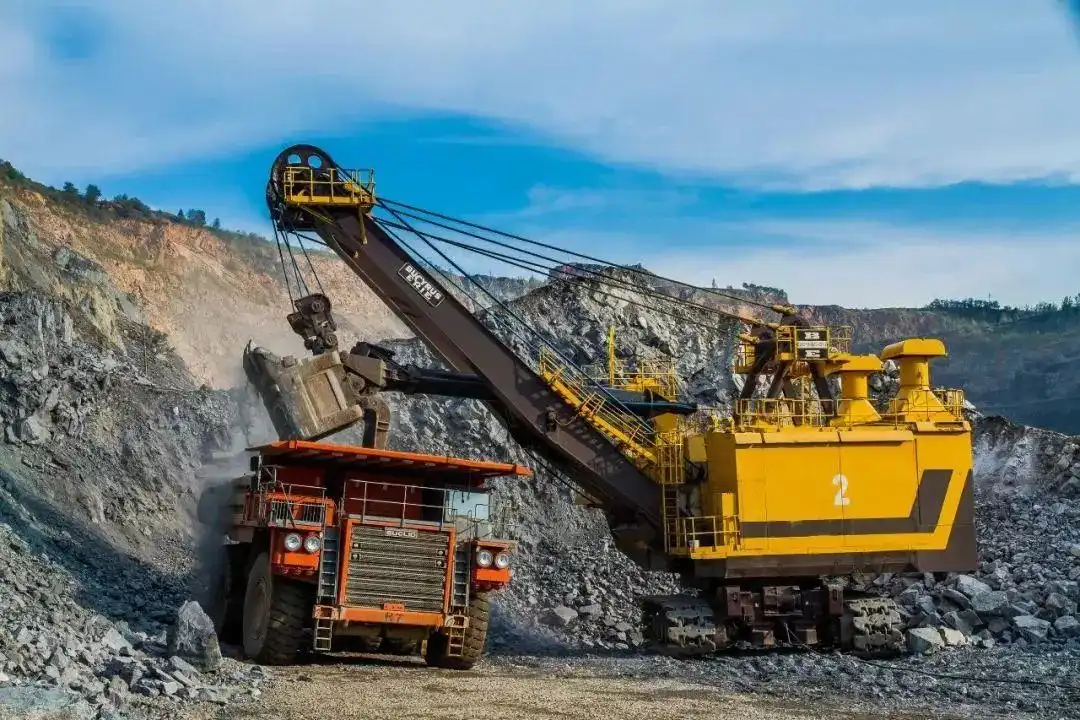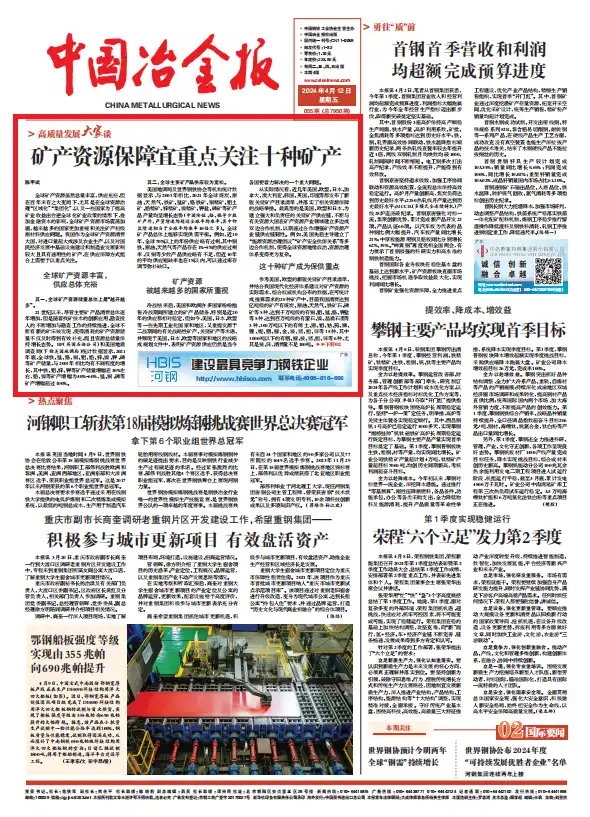Global mineral resource security:10 paths to ensure supply of key minerals
Although the world's mineral resources are abundant in total and abundant in supply, under major changes unseen in a century, especially the "regionalization" and "collectivization" of global resource governance, and the introduction of anti-global mining policies by some countries in order to increase mining profits. Under the circumstances, coupled with the influence of financial capital, the global mineral resources market has intensified, and more and more countries are paying more attention to and paying attention to the supply of primary mineral raw materials. As a major consumer of mineral resources in the world, China needs to pay special attention to the combination of supply guarantee methods for minerals that import large volumes or involve agricultural production, as well as minerals that have a great impact on infrastructure construction and manufacturing development in national economic development.
The world is rich in mineral resources and generally abundant in supply

First, global mineral resource reserves are generally "increasing as they open up".
Since the 21st century, although the overall consumption of major mineral products has increased year by year, with the innovative application of prospecting technology, the continuous increase in exploration investment and the continuous advancement of exploration work, new mineral deposits have been discovered around the world, resulting in the consumption of mineral resource reserves. Not only have they been effectively replenished in a timely manner, but the total resource reserves have maintained a growth trend. Statistics from BP (British Petroleum) and the U.S. Geological Survey (hereinafter referred to as the U.S. Geological Survey) show that at the end of 2021, global mineral reserves such as iron, manganese, chromium, copper, aluminum, lead, zinc, nickel, potassium, and phosphorus have increased to varying degrees compared with 2001. Among them, mineral reserves such as iron, aluminum, zinc, and potassium have increased by about 30%, minerals such as lead and nickel have increased by 40% to 60%, and minerals such as manganese, copper, and phosphorus have increased by more than 100%.
Second, the supply of major global mineral products is relatively loose.
Statistics from agencies such as the U.S. Bureau of Geosciences and the World Steel Association show that compared with 2001, the global output of coal, crude oil, natural gas, iron ore, manganese ore, chromite, copper concentrate, bauxite, lead concentrate, zinc concentrate, nickel concentrate, potassium salt, phosphate ore and other mineral products in 2021 are all increasing (except for a few minerals such as manganese, chromium, and nickel in China, the output growth rate exceeds the global average, of which the growth rate of potassium salt is equivalent to the global average. More than 10 times). Overall, global mineral products can achieve a balance between supply and demand. For example, in the past 10 years, more than 70% of the world's years have experienced a slight oversupply. Among them, steel, crude oil, natural gas and other products have an oversupply rate of 1% to 5%. Only a few products such as copper have been slightly undersupplied, but in the past 10 years The average supply shortage rate is also within 1%, and the gap can be made up for through inventory adjustment.
Mineral resources are being valued by more and more countries 
After the end of the Cold War, the United States and many European countries have sold off the mineral reserves established during the Cold War, especially since the supply has been relatively stable in the past 20 years. However, today, some pre-industrialized countries and regions such as the United States, Japan, and the European Union have revived the terms related to strategic minerals and key minerals that originated during World War II, and frequently appear in the strategic or planning documents of the United States, Japan, and the European Union. It shows that the supply of mineral resources is still a major issue that countries must focus on today.
Judging from the actual situation, in recent years, the United States, the European Union, Japan, Canada, Australia, South Korea, the United Kingdom, India, etc. have all released new versions of key mineral catalogs and implemented strategic measures to ensure relevant resources. The most typical examples are the United States, the European Union and Japan. In order to establish a strong and responsible key mineral supply chain, they continue to establish multilateral or bilateral cooperation mechanisms with relevant resource countries in the field of mineral resources industry, with a view to enhancing the resilience of mineral resources industry and supply chains through cooperation. For example, the United States has successively led the establishment of multilateral cooperation mechanisms such as the "Energy Resources Governance Initiative" and "Mineral Security Partnership", making the global resource geopolitics and resource governance system more complex.
These ten minerals have become the focus of ensuring supply 
Referring to the new version of the key mineral catalogs of the United States and the European Union, combined with the actual demand for mineral resources in the construction of China's modern economic system, and comprehensive data released by authoritative organizations, among the 28 minerals for which demand can be counted or estimated, China's current consumption has reached 100 million tons. There are 5 kinds of minerals such as coal, crude oil, natural gas, iron ore, and phosphate rocks. There are 5 kinds of copper, aluminum, manganese, chromium, and potassium salts that reach 10 million tons. There are fluorite, nickel, There are three kinds of crystalline graphite, etc., and 15 kinds of rare earth, tin, molybdenum, cobalt, tungsten, antimony, lithium, niobium, indium, gallium, gold, beryllium, germanium, tantalum, and rhenium are below 1 million tons. Among them, there are 6 kinds of indium, gallium, beryllium, germanium, tantalum, and rhenium, especially beryllium and rhenium, with consumption of less than 100 tons.
In principle, for general minerals involved in agricultural production, energy security, and factors that affect infrastructure construction and manufacturing development in national economic development, minerals that are crucial to energy transformation under the "double carbon" goal can be used as a guarantee of supply. Key objects. However, judging from the actual situation, on the one hand, the national imports of eight mineral products including crude oil, natural gas, coal, iron ore, copper concentrate, bauxite, manganese ore, and chromite in the past 10 years have accounted for the total import of mineral products. The proportion has approached 90%; On the other hand, these eight mineral products have a large import volume, and the vast majority of them have a foreign dependence of more than 50%. They are precisely the main general minerals that affect energy security, infrastructure construction and manufacturing development. In addition, they affect agricultural production. The potassium salts and phosphate rocks needed have made these 10 mineral resources the focus of ensuring supply at present. Under the "double carbon" goal, although domestic minerals with small quantities of supply and demand such as nickel, cobalt, and lithium are also in short supply, these minerals have achieved fruitful results in recent years and will not have an overall impact on economic and social development for the time being., it may not be used as the focus of ensuring supply for the time being.
There is no unified "panacea" to ensure the supply of these ten minerals, and they need to be treated differently. 
There are 10 mineral resources, including crude oil, natural gas, coal, iron ore, copper concentrate, bauxite, manganese ore, chromite, potassium salt, and phosphate ore, and the factors affecting the improvement of supply capacity are different. Among them, three types of minerals such as oil, natural gas and copper are mainly due to insufficient discovery of domestic resource prospecting that restricts the improvement of development capabilities. Three types of minerals such as iron ore, bauxite and potassium salt are mainly due to poor resource quality that restricts output growth. Two types of minerals such as coal and phosphate are mainly caused by insufficient supply or regional imbalance between supply and demand. Two types of minerals such as manganese ore and chromite are mainly caused by insufficient supply due to scarcity of domestic resources. In addition, insufficient resource development in high-altitude and ecologically fragile areas, and imperfect recycling systems for secondary resources such as scrap steel, copper scrap, and aluminum scrap have also affected the release of supply capabilities.
First, three types of minerals, including oil, natural gas and copper, need to be strengthened in prospecting and ensuring supply.
Supported by innovation in deep earth exploration technology and equipment, guaranteed by innovative exploration mechanisms and enhancing the vitality of the exploration market, we should increase financial exploration investment, increase prospecting efforts, consolidate and add a number of mineral resource bases, and continuously consolidate the foundation of resource security. Among them, oil and gas should accelerate the promotion of increased reserves and production in the western region, promote the construction of production bases in sea areas, strengthen unconventional oil and gas development, and strive to form more new areas of oil and gas production increase. In terms of copper mines, it is necessary to speed up the resolution of the problem that the supply of new exploration blocks cannot keep up, provide new exploration space for prospecting breakthroughs, prospecting and increasing reserves, provide stable and increased production of copper concentrates, and provide resource reserves for the construction of core areas of development bases. Guarantee.
Second, two types of minerals, including coal and phosphate ore, require coordinated policies to ensure supply.
In terms of coal, the country has a good resource advantage and production capacity base. The key to ensuring supply lies in the stability and continuity of policies. Regional or overall "one size fits all" rectification cannot occur due to individual mine problems. Mining enterprises 'production can no longer be allowed to hover between passive governance and rectification and supply guarantee policies, which will affect the overall stable production and increase production. In terms of phosphate ore, although the domestic supply as a whole is slightly surplus, the national phosphate fertilizer production and the development of phosphate ore resources do not completely match in space. Coupled with the rapid growth in the output of new energy lithium iron phosphate batteries, the production of phosphate fertilizer and some major production areas have restricted cross-regional and cross-provincial flows (autonomous regions and municipalities directly under the Central Government), and the "reluctance" of large enterprises to sell, the domestic phosphate ore market was extremely tight in supply in the first half of 2022, and prices soared. As a result, some listed phosphate fertilizer production companies have reduced phosphate ore procurement and reduced operating rates to avoid risks. In accordance with the requirements of building a unified national market, they need to cancel the current-restriction policy of "not leaving the province or the market" for phosphate ore to promote free market flow.
Third, three types of minerals, including iron ore, bauxite and potassium salt, need to strengthen technological innovation to ensure supply.
China is rich in iron ore, bauxite and potassium salt resources, but the quality of the resources is poor, which affects the economic and ecological benefits of resource development and utilization. For example, iron ore faces the problem of low grade resulting in a large number of tailings generated in development and utilization, the problem of red mud pollution from bauxite has not been solved, and potassium salts also face the problem of extracting potassium from brine and discharging a large amount of bittern that affects the environment. At the same time, China's high-sulfur bauxite ore under coal is difficult to develop due to technical and process problems. Currently, there are no successful cases of mature large-scale industrial development of domestic under-coal aluminum. Similar to these technical shortcomings and weaknesses that restrict the improvement of supply assurance capabilities, we need to adhere to innovation-driven efforts and expand the resource guarantee space by breaking through technical bottlenecks in development.
Fourth, iron, copper, aluminum and other minerals also need special policy support to ensure supply.
Recycling and reuse of waste resources is an important measure to enhance the ability to ensure supply. For example, the United States will produce 87 million tons of crude steel in 2021, of which 46 million tons of steel are produced from scrap steel, which solves about 53% of the demand for steelmaking raw materials. With the increase in the accumulation of scrap metal resources in China, the scale of recycled metal production is generally expanding, but its contribution to raw material supply still accounts for only 20% to 25%, which is less than 50% of the level of developed countries such as the United States. The imperfect policy system for the recycling of waste resources affects the substitution of primary minerals by recycled metals. It requires the state to strengthen special policy support in taxation, finance and other aspects for the recycling of waste resources such as scrap steel, copper scrap, and aluminum scrap to reduce the supply of primary minerals. pressure. For example, for scrap copper, copper-consuming products manufactured in China and China around 2020 will enter the retirement period around 2035. By then, about 4 million tons/year of copper substitute raw materials will be generated, which is expected to solve about 30% of domestic copper demand. In addition, the western region is the main region for China's future mineral product output growth, and special policies are also needed to support the full development of resources in these high-altitude and ecologically fragile areas.
Fifth, strengthen international mining cooperation to ensure supply.
In terms of oil and gas, Russia's crude oil and natural gas production in 2021 will account for 12.7% and 17.4% of the world's total imports respectively, and will account for 15.5% and 9.9% of China's total imports respectively. It is advisable to strengthen exchanges and cooperation between the two sides to promote Russia's oil and gas imports in China's energy industry. The status is stable and rising. In terms of non-oil and gas minerals, attention should be paid to major resource countries such as Brazil, Chile, Peru, Guinea, South Africa, Gabon, the Democratic Republic of the Congo, Kazakhstan, and Indonesia, accurately align with the localization requirements of Resources China's manufacturing chain, and promote cooperation with Resources China's manufacturing chain. Deep embedding and binding of interests, strive to reduce overseas investment risks. At the same time, we should focus on promoting sustainable and responsible mineral development, proactively release reliable and transparent data and information, reduce resistance from community environment, labor, safety and social governance, and effectively enhance the timely transformation of overseas rights and interests resources of enterprises into actual production capacity, production and product supply capabilities.
In addition, it is necessary to accurately judge the international situation, dynamically assess supply and price risks, improve the policy pool toolbox, and strengthen emergency response capabilities to respond to major international conflicts and resource incidents. It is necessary to strengthen the construction of reserve capacity, establish a reserve system that connects products, production capacity and production area reserves in which the government and enterprises jointly participate, improve the national reserve systems and policies for products, production capacity, and production areas, and enhance risk prevention and control capabilities.

